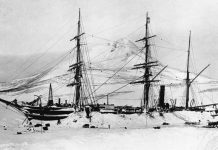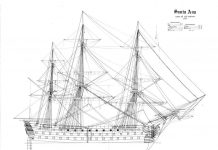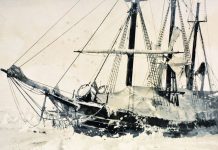On March 7, 1912, the Fram stopped off the island of Tasmania, and Amundsen from Hobart informed the world about the conquest of the South Pole. Although Amundsen’s new victory once again confirmed his status as a great polar traveler, the tragedy of his rival Robert Scott came to the fore in the world media and touched people’s souls more than the triumph of the famous Norwegian.
Of course, the tragedy of the English polar explorer and his companions for the rest of Amundsen’s life cast a shadow on the main achievement of the traveler – the conquest of the South Pole. However, this “competition” for the pole was fair, and the winner was the one who thought through everything to the smallest detail and provided for a variety of scenarios.
After reaching the South Pole, Amundsen was only 40 years old, he was overwhelmed with energy, attracted by the polar ice. If there was a third pole, he would immediately begin preparations for its conquest, but, alas, there was no extra pole for the Earth. In 1918, on the ship “Maud” Amundsen goes on a new expedition, his plans are to explore the coast of Siberia to the Bering Strait. This rather risky expedition lasted three years, but did not bring any special scientific results and was almost ignored by the public.
It seems that Amundsen was still very worried about the process of constantly “warming up” his fame as a great traveler, otherwise how can you explain that he decided to change his favorite dog sleds to the steering wheel of an airplane. In 1914, he became Norway’s first civilian pilot. Soon, with the support of American millionaire Lincoln Ellsworth, he buys two large seaplanes. He plans to be the first to fly by plane to the North Pole.
However, this time his luck is changing, because airplanes are not reliable dogs, they tend to break down sometimes. In 1925, the conquest of the pole from the air suffers a complete failure. One plane makes an emergency landing among the drifting ice, it has to be abandoned. Everyone transfers to the second plane, but soon he also makes an emergency landing due to a malfunction. Only after three weeks, having eliminated the malfunction, the team miraculously reaches Svalbard with the last liters of fuel.
Amundsen decides to fly over the pole in an airship. At the expense of the same Ellsworth, he buys the airship of the Italian aeronaut Umberto Nobile, whom Raul hires as chief mechanic and captain. The airship renamed “Norway” is delivered to Svalbard, and then it turns out that this time the glory of the aerial conquest of the pole has already been “stolen” from Amundsen. To some extent, the famous Norwegian has to experience the feelings of the late Robert Scott. He spent so much effort, made the first attempt, which almost ended in tragedy, prepared the second, and then some American Richard Bird flew over the pole in a twin-engine Fokker and dropped the star-spangled flag there.
True, an airship is still not an airplane, and it looks very impressive, compared to it, Bird’s plane is just a bug, for the public its flight is a much more attractive event, and in May 1926 the airship took off from Svalbard, safely crossed the Arctic through the pole and landed in Alaska in a place called Teller.










































